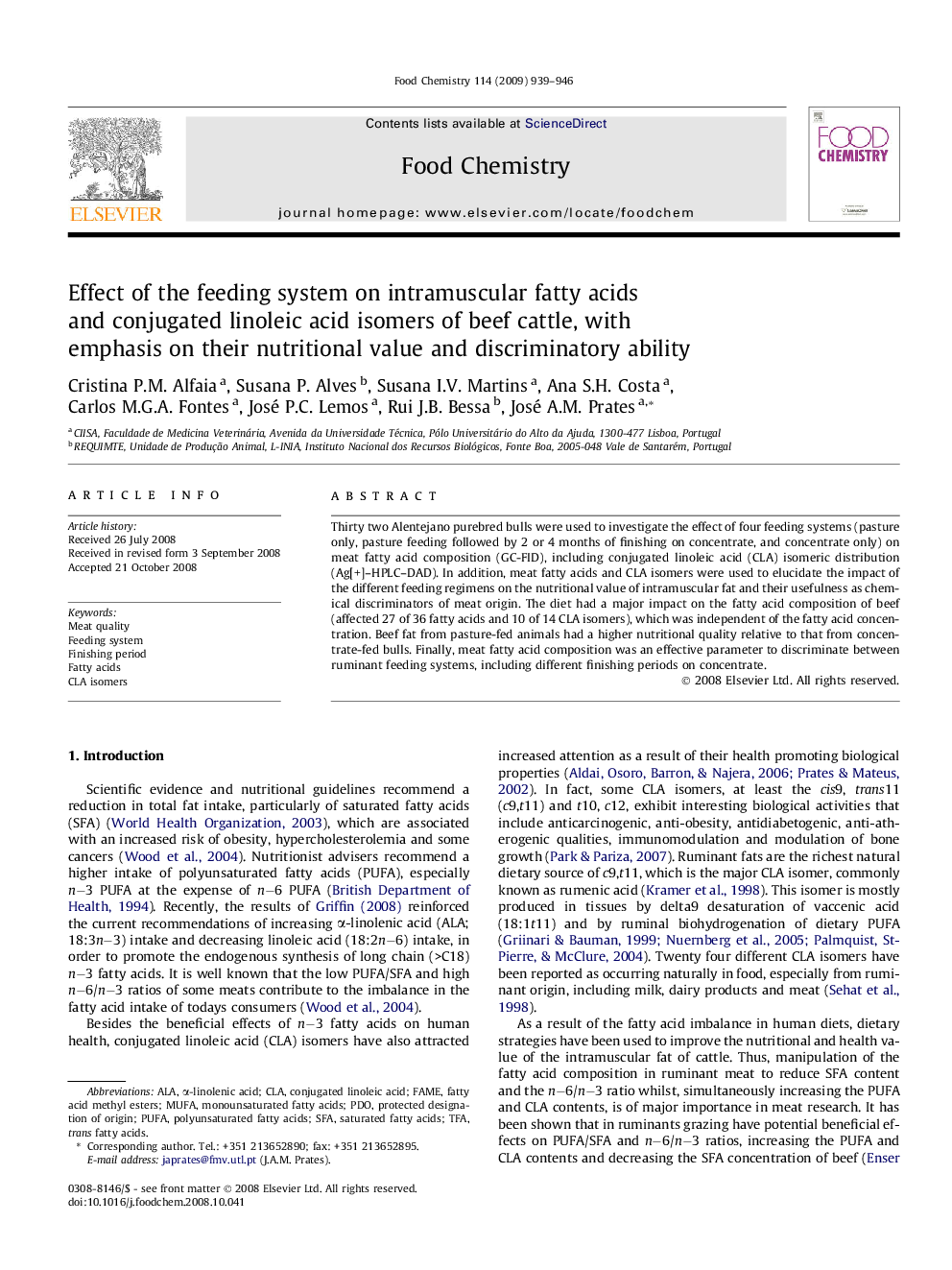| Article ID | Journal | Published Year | Pages | File Type |
|---|---|---|---|---|
| 1191118 | Food Chemistry | 2009 | 8 Pages |
Thirty two Alentejano purebred bulls were used to investigate the effect of four feeding systems (pasture only, pasture feeding followed by 2 or 4 months of finishing on concentrate, and concentrate only) on meat fatty acid composition (GC-FID), including conjugated linoleic acid (CLA) isomeric distribution (Ag[+]–HPLC–DAD). In addition, meat fatty acids and CLA isomers were used to elucidate the impact of the different feeding regimens on the nutritional value of intramuscular fat and their usefulness as chemical discriminators of meat origin. The diet had a major impact on the fatty acid composition of beef (affected 27 of 36 fatty acids and 10 of 14 CLA isomers), which was independent of the fatty acid concentration. Beef fat from pasture-fed animals had a higher nutritional quality relative to that from concentrate-fed bulls. Finally, meat fatty acid composition was an effective parameter to discriminate between ruminant feeding systems, including different finishing periods on concentrate.
